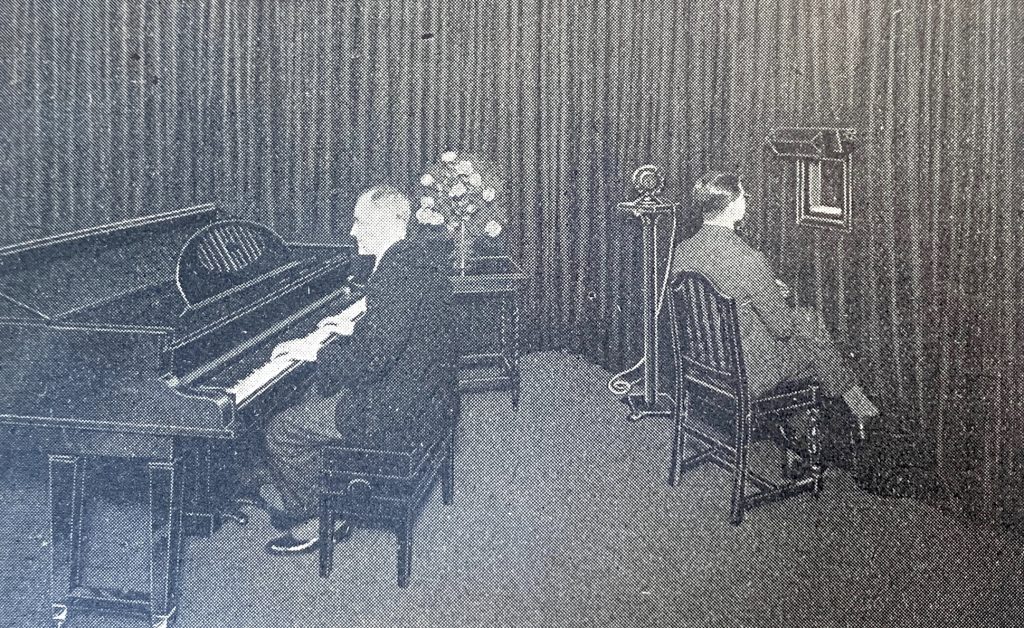OTD in early British television: 19 December 1928

John Wyver writes: Wednesday 19 December 1928 saw one of the earliest documented trasnmissions from the new studio (above, from Television, December 1928) of the Baird Television Development Corporation at 133 Long Acre in London’s Covent Garden. Four days after the broadcast from there of Box and Cox, highlighted in an earlier post, The Baird Concert Party offered ‘songs and patter’ from A.F. (‘Peter’) Birch, who is on the right in the photograph, and performances from baritone A. Calkin and comedian Reginald Shaw, with piano contributions from Constance (‘Connie’) King and Philip Hobson.
The Baird company had launched their Televisor at the Radiolympia trade fare in September, followed by a short residency at Selfridges, and a regular service of programmes had been promised. Having seen demonstrations, BBC executives were unconvinced, with assistant controller for information Gladstone Murray writing in an internal memo: ‘From the angle of service, yesterday’s demonstration would be merely ludicrous if its financial implications did not make it sinister… The Baird method is either an intentional fraud or a hopeless mechanical failure.’
Undaunted, and buoyed by recently-secured GPO licences for experimental transmissions, on Monday 12 November, the Baird company began experimental 30-line transmissions as the station 2TV. Journalist William Fox remembered the five-metre-square studio in Long Acre, which was fitted out with ‘dark blue curtains… The ceiling was covered with orange coloured material while the floor was covered with felt and grey matting. A few good chairs and a grand piano completed the furnishings.’
At this point Baird was employing the ‘flying spot’ system that shone a pinpoint beam to scan the subject’s head and shoulders vertically. The level of reflected light was picked up by small arrays of photocells. The subject to be televised sat in darkness in front of a hole in the wall through which, from the control room next door, the beam from a Nipkow scanning disc was focussed.
The late night broadcasts, with sound on a separate wavelength, were made from two low-power transmitters via an aerial on the roof of the building. They could be received by only the tiny number, perhaps around thirty, of those who had acquired Baird Televisors, even though they were not yet on sale, and by hobbyists who had built their own receiver.
There are few recorded details of broadcasts through the winter and spring, but it appears that on occasion Dora Caffrey, one of the company’s secretaries, and switchboard operator Connie King often provided piano accompaniments. The Baird Concert Party initiated what was claimed as a regular series of twice-weekly programmes, although only scant details are available for later broadcasts.
Writing about the earliest films made by the Edison Laboratory in New Jersey in 1893, Charles Musser noted that the employees took part in them as a form of play, drawing together work and leisure. ‘Filmmaking was a break from the everyday demands of work and experimentation,’ Musser proposed.
At the same time, the fact that the Edison films were set in a fictional barbershop and around a blacksmith’s anvil ‘reveals a kind of historical impulse, a looking backwards that feeds the ultimate technological novelty.’ In a similar way, these playful early broadcasts by the Baird workers, including The Baird Concert Party, adopted the form and name of a Victorian seaside show or parlour entertainment.
Leave a Reply